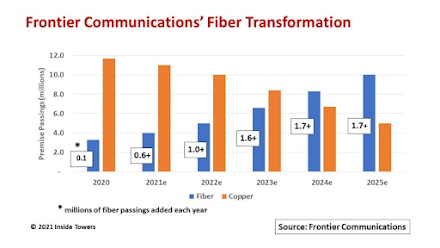How soon will the headline speed for home broadband reach 10 Gbps? And what does that imply for the speeds most consumers will purchase?
There is widespread expectation that the headline speed for home broadband, in many markets, will be 10 Gbps by about 2025. By other rules of thumb, that also suggests the "typical" home broadband customer will be buying service at rates between 1 Gbps and 2 Gbps, with a significant percentage buying service at 4 Gbps.
The top home broadband headline speeds matter, even when most mainstream home broadband buyers never buy the fastest tiers of service. The reason, simply, is that mainstream buyers gravitate to the mid-tier packages as the best combination of value and price, not the fastest or budget tiers of service.
In the third quarter of 2021, for example, 66 percent of U.S. households purchased service operating between 100 Mbps and 400 Mbps, according to Openvault, when the top tier of service was 1 Gbps.
You might say price anchoring is at work. Price anchoring applies for list costs of consumer broadband services no less than for other products.
"Price anchoring" is the reason most consumers able to buy gigabit internet access do not do so. Price anchoring is the tendency for consumers to evaluate all offers in relation to others. As the saying goes, the best way to sell a $2,000 watch is to put it right next to a $10,000 watch.
In the United Kingdom for example, 86 percent of consumers buy service at speeds of 30 Mbps or about 100 Mbps, even when the headline speeds have reached a gigabit per second and are now in the early stages of heading for 10 Gbps and terabits per second by 2050
As Nielsen’s Law suggests, the headline speeds grow at an average of 50 percent per year, typically in star step fashion as platform upgrades are made.
Nielsen Norman Group estimates suggest a headline speed of 10 Gbps will be commercially available by about 2025.
By 2030, Nielsen’s Law suggests, the fixed network headline speed will be 85 Gbps. The implication is that typical mobile speeds--which often lag fixed network speeds by an order of magnitude or two orders of magnitude--will by 2030 be looking at speeds up to 8.5 Gbps, but possibly as “low” as 1 Gbps per connection.
Since most mobile device instances of use are “single user,” mobile speeds do not have to share bandwidth as do home broadband accounts, where multiple devices are supported by a single home broadband connection.
That also implies that mobile speeds do not have to match fixed network speeds to remain competitive or useful.
source: IDtechex

